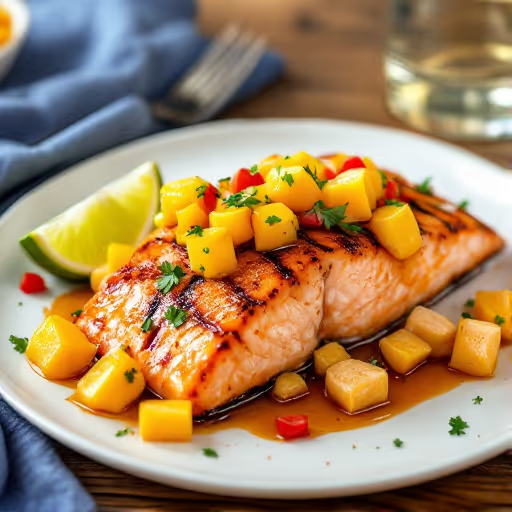Grillwisehub FAQ for:
Texas Style Pork Ribs
I don't have 5 hours for smoking ribs. Is there a quicker approach that still gives authentic Texas flavour?
You can use a hybrid method by smoking the ribs for just 2 hours at 250°F (121°C) to develop that crucial smoke flavour, then transfer them to a 300°F (149°C) oven after the wrapping stage. This cuts about 1-1.5 hours off the total cooking time while still maintaining that authentic smoky Texas flavour profile. For the best results, finish the ribs unwrapped on the grill over direct medium heat for 5-10 minutes before serving to re-establish some bark and add a final layer of smoke flavor.
Can I achieve the same smoky flavour with less sodium in the Texas rub?
Absolutely! You can reduce the kosher salt from 2 tablespoons (30g) to 1 tablespoon (15g) while increasing the paprika to 1.5 tablespoons (22.5g) to maintain flavour intensity. This modification cuts sodium content by approximately 50% while preserving the characteristic Texas flavour profile. For even more depth with less sodium, try adding 1 teaspoon (5g) of smoked paprika and 1 teaspoon (2g) of dried oregano to compensate for the reduced salt. Remember that the primary flavour in authentic Texas-style ribs comes from the black pepper and smoke rather than salt, making this a flavour-friendly modification.
How do I know when my ribs are perfectly done without using a thermometer?
The most reliable test for perfectly cooked Texas-style ribs is the "bend test" - pick up the rack with tongs at one end; properly cooked ribs will bend significantly and the meat will slightly crack on the surface. Another indication is meat pulling back from the bone ends by about 1/4 inch (6 mm). The "toothpick test" is also crucial - when a toothpick slides into the meat between bones with minimal resistance, similar to inserting it into warm butter, your ribs are done. Never rely on the "fall off the bone" method, as properly cooked Texas-style ribs should have some bite resistance while still being tender.
How does switching from spare ribs to baby back ribs affect the protein-to-fat ratio in the low-calorie version?
The switch from spare ribs to baby back ribs significantly improves the protein-to-fat ratio, contributing to the reduction from 31g to 15g of fat per serving while maintaining high protein content (increasing from 36g to 38g). Baby back ribs naturally contain about 30-40% less fat than spare ribs while offering slightly more protein density per weight. This modification, combined with the olive oil spray replacing vegetable oil, creates a 140-calorie reduction per serving without compromising the essential flavour profile. For those tracking macros, this adjustment provides a more favorable 52% protein, 47% fat ratio compared to the traditional version's 33% protein, 65% fat distribution.
What's the best way to store and reheat leftover smoked ribs without losing texture and flavour?
For storage, refrigerate ribs with sections intact (3-4 bones per section) in an airtight container for up to 4 days. For longer storage, vacuum sealing and freezing works exceptionally well for smoked ribs, maintaining quality for up to 3 months. When reheating, avoid microwave methods completely as they'll toughen the meat. Reheat refrigerated ribs directly from the refrigerator by placing them in a 250°F (121°C) oven wrapped in foil with 2-3 tablespoons (30-45ml) of apple juice or broth until they reach 165°F (74°C) internally, about 40-45 minutes. For vacuum-sealed frozen ribs, you can place them directly into a sous vide bath at 145°F (63°C) for 1.5 hours without thawing, which provides perfect edge-to-edge warmth without any moisture loss or food safety concerns.




.avif)

